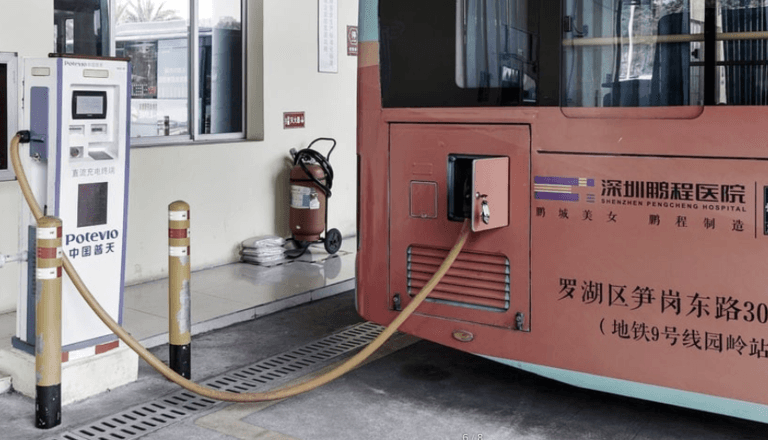
For years, critics have dismissed clean energy technologies like solar and wind power to be too inefficient, too expensive and too inaccessible to scale.
We have seen how that argument has changed in recent years as renewables have come down in price to become cost-competitive with conventional fuels.
The same can now be said about electric vehicles (EVs) – and according to Bloomberg New Energy Finance (BNEF), electric buses will advance at even a faster clip than electric cars for passengers. “In almost all charging configurations, e-buses will have a lower total cost of ownership than conventional municipal buses by 2019,” says BNEF’s latest report on the outlook for electric vehicles.
Sales of electric vehicles across the globe will surge in the coming years – the trend is already undeniable. Just a few years ago, total sales of EVs only totaled a few hundred thousand. But once often derided as “toys,” EVs now have momentum: BNEF forecasts total sales of EVs this year to reach 1.6 million worldwide.
Price, of course, is a large reason why vehicles with all-electric drive trains are becoming more popular. When BNEF first estimated EV battery prices back in 2010, the average cost was $1,000 per kilowatt-hour (kWh). That price has since plunged to an average of $209/kWh – a 79 percent drop. Meanwhile, batteries have become more efficient and powerful, with their energy intensity ticking up an average of 5 to 7 percent a year. It also does not hurt that consumers are warming up to improved designs, and we are not just talking about Tesla – witness future models such as Volkswagen’s promised I.D. Buzz, which harkens back to the VW camper vans of yesteryear.
Yet it is the rapid growth of electric buses that makes this report such a compelling read. Worldwide, BNEF expects bus fleets worldwide to go all-electric faster than light-duty vehicles.
It should be no surprise that China is largely behind this shift.
With all the talk in North America and Europe about “smart cities,” we are seeing their emergence in China before anywhere else on the planet. Many Chinese cities’ public transportation systems, insists BNEF, are on track to have their entire bus fleets go all-electric by 2020, if not sooner. Why? “China’s push is as much about industrial policy as it is about environmental or energy security concerns,” says the report’s authors. “China is building national champions and an e-mobility ecosystem for what it sees as a major strategic industry over the coming decades.”
Subsidies can only explain part of this transformation in the world’s most populous country. National subsidies will be gone by 2020, but automakers doing business China are subjected to a “new energy credit system,” in which automakers are held to an EV manufacturing quota – or will have to purchase credits if they fall short of their mandates.
BNEF expects this mobility trend to transcend China. Batteries will continue to become more efficient, and fleet managers are already finding the operational costs of electric buses to be cheaper than those powered by diesel or other conventional fuels. By 2030, BNEF expects 84 percent of all municipal bus sales to be all-electric; currently, China accounts for 99 percent of e-bus acquisitions worldwide.
Hiccups remain as EVs displace more vehicles with an internal combustion engine (ICE). A convenient charging infrastructure for drivers is still lacking in many municipalities, which still leaves many consumers with "range anxiety." Nevertheless, BNEF is bullish on the future of all-electric. By 2040, 55 percent of all new cars and one-third of the world’s total fleet will be EVs. Their upfront costs will be far more competitive with conventional vehicles by 2024 - and will reach cost parity by the end of next decade.
The results will be a net gain for the environment, too, as BNEF forecasts EVs to reduce the consumption of daily transportation fuel by 7.3 million barrels daily by 2040.
Image credit: BNEF

Leon Kaye has written for 3p since 2010 and become executive editor in 2018. His previous work includes writing for the Guardian as well as other online and print publications. In addition, he's worked in sales executive roles within technology and financial research companies, as well as for a public relations firm, for which he consulted with one of the globe’s leading sustainability initiatives. Currently living in Central California, he’s traveled to 70-plus countries and has lived and worked in South Korea, the United Arab Emirates and Uruguay.
Leon’s an alum of Fresno State, the University of Maryland, Baltimore County and the University of Southern California's Marshall Business School. He enjoys traveling abroad as well as exploring California’s Central Coast and the Sierra Nevadas.














